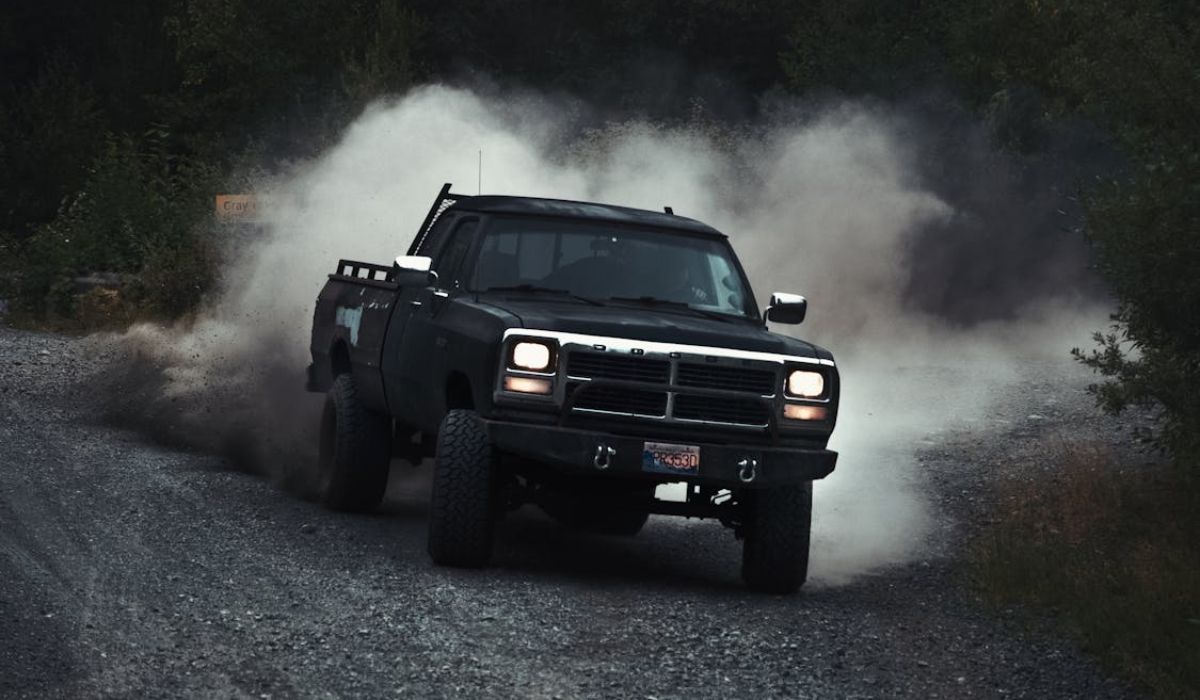Nevertheless, one of the most important parts of your truck is the tires. Implementing proper tire care can improve safety, fuel efficiency, and tire life whether you’re off-roading, driving on highways or hauling large goods. We’ll go over useful maintenance advice in this guide to help you get the most out of your truck tires.
1. Maintain and Check for Proper Tire Pressure
Safety, tire longevity, and fuel economy all depend on maintaining the proper tire pressure. Tires that are overinflated or underinflated may have uneven wear, poor handling, and a shorter lifespan.
How to Check Your Tire Pressure:
- PSI (pounds per square inch) can be measured with a tire pressure gauge.
- The required PSI can be found on the driver’s side door placard or in the owner’s manual for your truck.
- Prior to lengthy journeys and at least once a month you should check the tire pressure.
Why Proper Tire Pressure is Important:
- Reduced fuel efficiency and increased rolling resistance are the results of underinflated tires.
- Reduced traction and uneven tread wear are caused by overinflated tires.
Quick Tip: Check the tire pressure when the tires are “cold,” as heat can temporarily raise the PSI readings.
2. Rotate Your Tires Regularly
Tire rotation prolongs the life of all four tires by distributing wear equally. Driving behavior, road conditions, and weight distribution can all lead to uneven wear to your tires
When is the Best Time to Rotate Your Tires:
- Rotate your truck tires every 5,000 to 7,000 miles, or just follow the manufacturer’s recommendation.
- If your truck always carries heavy loads, rotations may need to be done more often.
Rotation Patterns:
How to rotate your tires depends on whether your truck has front-wheel, rear-wheel, or all-wheel drive:
- Front-Wheel Drive: Swap the front tires to the rear and crisscross the rears to the front.
- Rear-Wheel Drive: Move the rear tires to the front and crisscross the fronts to the back.
- All-Wheel Drive: Just follow an X-pattern for equal wear.
Quick Tip: Pair tire rotation with oil changes for convenience.
3. Balance and Proper Alignment of Your Tires
Proper wheel alignment and balancing ensure that your truck drives smoothly and prevents premature tire wear.
Tire Balancing:
When you balance your tire it compensates for uneven weight distribution in the tire and wheel assembly. Here are some signs that your tires need balancing:
- Vibrations in the steering wheel, floor, or seats while driving.
- Uneven tire wear.
What’s Wheel Alignment?
Alignment adjusts your truck’s suspension so the tires meet the road at the correct angle. Misaligned wheels can cause:
- Your truck to pull to one side.
- Rapid, uneven tire wear.
- A steering wheel that’s crooked, even when driving straight.
When to Check:
- Schedule a tire balance and alignment every 6 months or whenever you hit a pothole, curb, or obstacle hard enough to feel it.
4. Inspect Your Tires for Damage and Tread Wear
Give your tires a visual checkup every now and then. Noticing small problems early can save you from bigger, costlier issues down the road.
What to Look For:
- Tread Depth: Place a penny into the tread groove with (Lincoln’s head facing down). If you can see all of his head, then it’s time for new off road tires.
- Cracks or Bulges: Look for cracks on the sidewalls, cuts, or bulges – these surely indicate internal damage.
- Embedded Objects: Look for nails, stones, or debris stuck in the tread.
It Matters Because:
- Worn tread reduces traction, especially when you are driving in rain or on uneven surfaces.
- Damaged tires can lead to dangerous blowouts or loss of control, especially at high speeds.
Quick Tip: If your tread depth is less than 2/32 inch, I advise to replace your tires immediately. It is always better safe than sorry!
5. Never Overload Your Truck
Even though it has sturdy construction, trucks have their limitations. Excess weight puts additional strain on your tires, which can lead to premature wear and tear or, worse, failure altogether.
Some Ways to Prevent Overloading:
- Verify the load ratings on your tires as well as the Gross Vehicle Weight Rating (GVWR) of your truck.
- To ensure that no tire bears an excessive amount of imbalance weight, distribute large loads equally in your truck.
- Don’t go above the towing capacity of your truck.
What Happens When You Overload:
- Too much weight can cause excessive heat buildup in the tires, increasing the risk of blowouts.
- Fuel efficiency, overloaded trucks handle poorly and burn more fuel.
Quick Tip: If you regularly tow trailers or haul heavy loads, you consider investing in tires with a higher load rating.
6. Store Spare or Seasonal Tires Properly
Storing your tires properly when they’re not in use keeps them in good driving condition. Whether it’s a spare set or seasonal tires, here’s some things you need to do:
Storage Tips:
- Store your tires in a cool, dry spot, away from sunlight and moisture.
- Keep them upright or hanging to avoid flat spots on them.
- Use tire bags or covers to protect them from dirt and dust.
Prior to Storing:
- Get rid of any dirt, debris, or road chemicals, wash your tires.
- Mark each tire (e.g., LF for Left Front) to make rotations easier when reinstalling them.
Quick Tip: Avoid stacking tires on top of each other for extended periods to prevent unwanted tire distortion.
When maintaining your truck, don’t forget that tires are just one part of the equation. Other lorry parts, like brakes, suspension components, and wheel bearings, also play a key role in keeping your vehicle running smoothly.
7. You Must Know When to Replace Your Old Tires
Tires have what they call “shelf life” even if they are properly maintained. As they age, the rubber hardens and loses flexibility, which can make driving really unsafe.
How to Tell the Age of Your Tires:
- Check the DOT number on the sidewall of your tires. The last four digits tell you the week and year the tire was made (e.g., 1421 means the 14th week of 2021).
- If your tire is already 6 to 10 Years Old, even if they still looks great you should replace them.
Some Signs, It’s Time to Replace:
- Bulges, cracks and dry rot.
- Tread that’s worn below 2/32 inch.
- Increased driving vibration and road noise.
Quick Tip: Always check your tire age when buying new or used tires. Even unused tires can degrade over time.
Final thoughts
Maintaining the tires on your truck doesn’t have to be so difficult. You may save money and prevent unplanned breakdowns by simply monitoring tire pressure, rotating your tires frequently, and checking for damage. By remembering to properly align and balance your tires, and when they start to show symptoms of wear and tear, replace them.
Your truck’s tires are what hold it to the road. They will keep you moving safely for many kilometers if you take good care of them. Have a safe driving!




